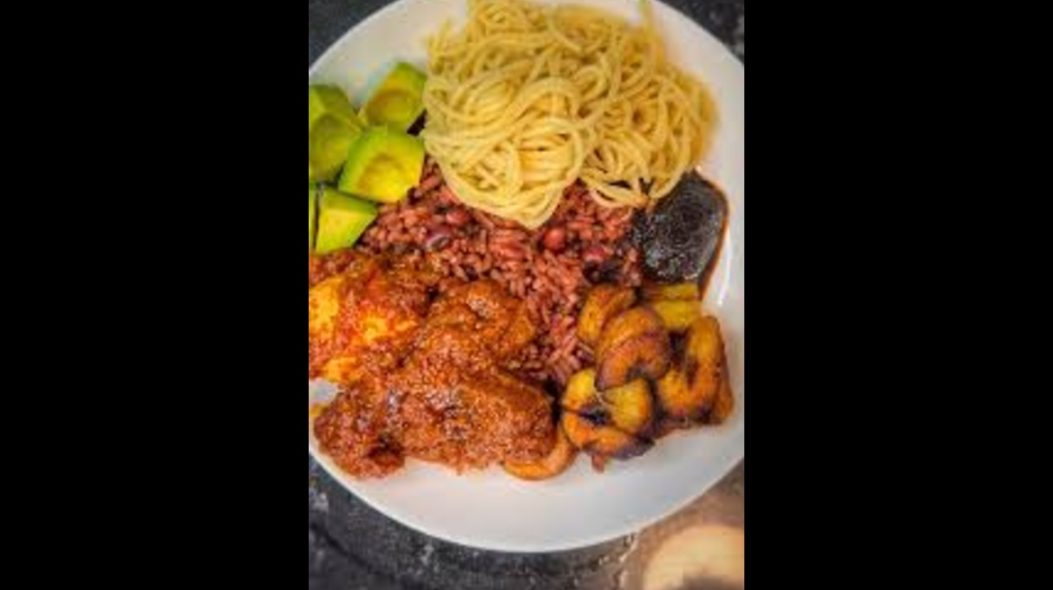Visiting Accra, Ghana without indulging in a taste of premium Waakye would truly be an error. Determined not to make such a mistake, I ventured into a local restaurant nestled in the heart of the bustling city, in search of this iconic dish. Waakye, a cherished meal in Ghanaian cuisine, is typically made by cooking black-eyed peas or cow peas together with rice. The unique flavor profile of this dish comes from the addition of red sorghum leaf sheaths or stalks, which are carefully incorporated into the cooking process. The sorghum adds a subtle earthy richness to the rice and beans, giving the dish its distinctive dark hue. Limestone is also added during the cooking, helping to soften the beans and contribute to the overall flavor complexity.
What struck me first about Waakye was the way it was served. The entire meal was carefully wrapped in a banana leaf, an authentic touch that heightened the sensory experience. The fragrance of the rice and beans, mingling with the earthy scent of the banana leaf, was absolutely inviting. The meal came with an assortment of flavorful accompaniments, each enhancing the dish in its own way.
One of the highlights was the thick, comforting tomato stew, which was brimming with tender boiled eggs that had simmered gently in a rich, peppery gravy. The fresh red tomatoes lent a tangy sweetness to the stew, while the heat from the peppers added just the right amount of spice. The boiled eggs were perfectly soft on the inside, their yolks rich and creamy, absorbing the full depth of the flavorful stew. Each bite felt like a warm hug, the stew offering a perfect balance of heat and heartiness.
Though I’m not typically a fan of garri as part of a meal, I appreciated the way it was served in this context. Garri, with its slightly grainy texture, added a starchy contrast to the soft rice and beans, providing a filling component to the meal. The garri was complemented by a dollop of shito, a spicy, flavorful pepper sauce that gave each mouthful an extra kick.
The vegetable salad, featuring crisp cabbage, fresh onions, and juicy tomatoes, brought a refreshing crunch to the dish, offering a slight contrast to the heavier components. And of course, the fried plantain, or “dodo,” was the perfect sweet complement to the savory flavors of the meal. The golden fried pieces of plantain, with their crisp edges and tender insides, were a delicious balance to the heat of the stew and the richness of the rice and beans.
While I’m not usually drawn to garri, I couldn’t deny the way all the ingredients harmonized together to create a fulfilling, wholesome meal. The layers of textures and flavors—earthy, spicy, tangy, and sweet—blended seamlessly in a way that made Waakye not just a meal, but a truly satisfying experience. Each bite was an exploration of Ghanaian cuisine, offering a window into the culture and the care that goes into preparing such a beloved dish.
The entire experience felt like more than just eating; it was an immersion in the flavors and traditions of Accra. Waakye isn’t just food; it’s a celebration of Ghanaian culinary heritage, and I was grateful to have tasted it in its most authentic form. It was undoubtedly a filling meal, but it also felt deeply nourishing, leaving me not just satisfied but content.




